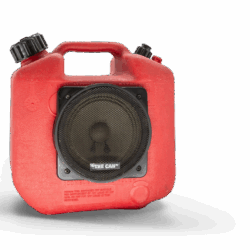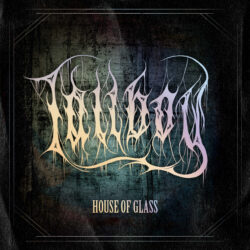
Alan Sparhawk Gets By With a Little Help From His Friends
Alan Sparhawk has been a friend of Trampled By Turtles for a long time. Both parties came up in Duluth, Minnesota, and Low—Sparhawk’s often ethereal slowcore band with his wife, Mimi Parker, who died from ovarian cancer in late 2022—took Trampled By Turtles out on the road very early in the latter’s career. But few would’ve expected a studio collaboration between Sparhawk and the bluegrass merchants. With Trampled By Turtles makes one wonder why. The record is deeply moving, often pulsing with powerful forward momentum, driven by Sparhawk’s unadorned voice like a herald calling out that something heavy this way comes. Of course, it arrives—especially in the bruised ecstasy of “Screaming Song” and the mournful “Don’t Take Your Light.” “Some of the songs are the first things that fell out of me in response to loss and grief,” Sparhawk says over the phone from the Quad Cities, on tour with Circuit des Yeux. “Some of them are pretty pointed, and I really felt the duty to do those songs justice, to honor them for what they were and what they came from. White Roses, My God was literally just my head exploding and me running away from the guitar and from my voice and trying to figure out some way to let this explosion out of my skull, this screaming, you know? And this thing with the Turtles is the first breath.”The two albums were recorded around the same time—even sharing the songs “Heaven” and “Get Still”—but they’re polar opposites, sonically. White Roses, My God trades in all-encompassing electronic soundscapes and so much vocal modulation that Sparhawk is unrecognizable, while With Trampled By Turtles feels stripped down, and features his voice rising clear above the bluegrass group’s earthy, mostly acoustic string work.“It’s this unified wall of strings coming at you,” Sparhawk says about Trampled By Turtles. “There’s something egoless about the way they play together and the way they make sound. It doesn’t get broken down the same way a lot of bluegrass ensembles approach things.”“I remember being still pretty scared and uncomfortable with my voice after years of singing with Mim and from the loss in general.”After Parker died, Trampled By Turtles extended Sparhawk an invitation to hit the road for a few dates with them, an experience that brought the two closer and planted a seed that bloomed in Cannon Falls, Minnesota, in the winter of 2023. Sparhawk came in at the tail end of a Trampled By Turtles recording session there with a handful of songs, some old, some new, and the album came together swiftly. The result is a recording that foregrounds feeling, naturality, and spontaneity—more a pouring out than a piecing together. It’s often jarring how bare Sparhawk’s voice is, akin to an exposed nerve. It sounds more than a bit like a leap of faith, and he mentions that his only skill is diving into the unknown. “I’m quick to jump off the cliff,” he says.“I remember being still pretty scared and uncomfortable with my voice after years of singing with Mim and from the loss in general,” Sparhawk says. “It really was making me feel very, very lost and awkward, singing. And I think during this Turtles thing—because this opportunity had come up and these guys had been so friendly and gracious with me—I consciously remember having to go, like, ‘I know I’m still not comfortable hearing my voice right now, but I have to just trust. I have to trust that this is what I can do, that I can sing, and that I’ve been working hard on this all my life. For the sake of the moment, put aside my confusion, and just trust that maybe five or six months down the line, I’ll be able to look back and decide whether I was comfortable with it or not.’ And honestly, it helped.”“When I was a teenager, I remember very specifically saying that I like the guitar, and I really wanted to take it seriously, and I made a pact with myself to play it every day.”It also marks a coming back to guitar for Sparhawk, the instrument that remains his “main physical connection to music.” But one needs to get away to come back. He thrives off of switching things up, much more able to see the big picture when he’s thrown into situations where he’s doing different things and forced to look at music differently. He says he struggles with the guitar, and has to practice often to stay fluent with what he wants to do. An opportunity to ponder something he hasn’t pondered, or play in a way that he hasn’t quite had to before, is always positive for him.“I’ve always insisted on playing every day,” Sparhawk says. “When I was a teenager, I remember very specifically saying that I like the guitar, and I really wanted to take it seriously, and I made a pact with myself to play it every day. So it’s always there. It’s a world in my brain that I feel pretty happy in. But at the same time, I have to constantly be engaged with it to keep my footing there.”Alan Sparhawk’s GearGuitars1960s Danelectro Convertible1970s Gibson HummingbirdAmps1960s Silvertone ampFender Pro Junior (small stages)Fender Twin (large stages)EffectsChase Bliss OnwardChase Bliss MoodRed Panda TensorZVEX Octane 3ZVEX Box of RockBoss synth pedalTech 21 Double DriveStringsD’Addario strings (.011-.056)His own approach to music-making and his musical community seems to be providing plenty of opportunity for challenges; the doomy goth-rock of Circuit Des Yeux sounds worlds apart from With Trampled By Turtles, which sounds worlds apart from White Roses, My God. And yet, it all exists in Sparhawk’s musical world—a world he says he feels blessed and grateful to be in, one that fascinated him as a child and that he wanted to be a part of. It’s given back in spades, too. Low, of course, was a family affair, and so is this new record, on which Sparhawk’s daughter, Hollis, also sings, during the chorus of “Not Broken.” One gets the feeling that connection has always been the point.“Anyone who’s been blessed with friends that are there for them when they’ve had losses—those are the most important things in life,” Sparhawk says. “I think music is there to remind us of that, and give us a really amazing opportunity to feel that with each other and to bless each other.” YouTubeLose yourself in this peaceful, psychedelic rendering of “Get Still,” off of With Trampled by Turtles.
Read more »Album Premiere: Victim of Fire – ‘The Old Lie’
Hear The Old Lie, the debut from Denver-based blackened crusties Victim of Fire before its release on August 1.
The post Album Premiere: Victim of Fire – ‘The Old Lie’ appeared first on Decibel Magazine.

John Dreyer explains how attenuation lets you control your amp’s volume without losing tone
In the most recent episode of Plugged In, John Dreyer explains how attenuation lets you control your amp’s volume without losing tone. Watch the full episode, exploring all things Tube…
Read more »
“You don’t come into a Van Halen record and tell Eddie, ‘This is how we’re going to do it’”: Why Eddie Van Halen didn’t double-track his guitars
Recording engineer Ross Hogarth recalls working with the late guitar icon and helping him broaden his sound on A Different Kind of Truth
Read more »
When Dave Grohl Used an Amp in a Gas Can to Make Foo Fighters’ Lo-Fi Debut
This year, the Foo Fighters’ self-titled debut turns 30 years old. As a nearly obsessed fan of the band since 2011’s Wasting Light, I’ve developed an exceptionally strong attachment to the first album. By now, we all know the story: Following the tragic and sudden end of Nirvana, Dave Grohl found himself searching for the right way to start making music again. In October 1994, he booked a week at Robert Lang Studios in Seattle, Washington, with producer Barrett Jones, and they got to work recording what would become the debut Foo Fighters album. This release would serve as the foundation for the band’s tenure at the forefront of modern rock for decades to come. There is something uniquely nostalgic and spontaneous about the sound of Foo Fighters. The crunchy guitars and uptempo beats are straight off the heels of the grunge movement, with elements of punk and metal—staples of Grohl’s musical influences growing up—plus a sweet, melancholy shoegaze vibe, which permeates songs like “Floaty” and “X-Static.” These recordings are lo-fi, but still deliberate and precise, a testament to both Grohl’s skill as a musician as well as the limited session time allotted to complete the album.The gear used to record this album has always been an intriguing mystery to me, and one piece specifically kept popping up in my research: an amp known as the Can. Over the years, both Grohl and Jones have cryptically mentioned a mythical amplifier that provided the most glorious, disgustingly raunchy fuzz tones, heard most notably on closing track “Exhausted.” For a long time, fans online talked about a “gas-can amp,” an “oil-can amp,” or even some claiming the effect was achieved by placing a microphone into a metal can next to a guitar amp—nobody was quite sure what exactly the source of this sound was. In 2021, Jones hosted an “ask me anything” live stream on his YouTube channel. I was lucky enough to catch it, and the first question I asked was about this mystery amp. That’s when I first laid my eyes on the Can. It’s literally what it sounds like: a small, battery-powered practice amp built into a red plastic Jerry can. My mind was blown; I needed to know more.“I had to take a moment to step back from the situation and admire how silly it was to be so excited about this; objectively, this amp sounds terrible, like a swarm of bees rattling around in a plastic jug.” The story goes that SLM Electronics, an amp-manufacturing division of St. Louis Music, produced these amps in the mid ’80s as a battery-powered solution for buskers. As a novelty, they created a plastic enclosure that resembles a plastic gas can for the solid-state amplifier controls as well as the 5″ speaker. Approximately 10,000 of these amps were manufactured and distributed out of the same factory where the original Crate amps were made in the U.S.Once I learned exactly what this amp was, my mission became clear: I needed one. I quickly discovered how difficult it is to find these amps. Even as a seasoned gear-hound, well-acquainted with the standard practice of scouring Reverb, eBay, Musician’s Friend, and every other source where used musical equipment can be found, I was coming up empty-handed. My searches resulted in a few expired Reverb listings from years earlier of people selling these amps for dirt cheap, which, while frustrating, yielded an encouraging sign that the lore behind “the Can” was not yet common knowledge. My worst fear was that word would get out about these amps and we’d end up with another instance of PDS: Peavey Decade Syndrome. (If you know, you know.)In a turn of miraculous serendipity, I stumbled across someone selling one on Facebook Marketplace and jumped on it. I’d managed to snag my very own Can amp. I had to take a moment to step back from the situation and admire how silly it was to be so excited about this; objectively, this amp sounds terrible, like a swarm of bees rattling around in a plastic jug. However, when I finally plugged in my guitar for the first time and strummed that first D minor chord from “Exhausted,” I knew immediately: That’s the sound.The simple truth I’ve come to terms with over the years as a guitarist is that “good tone” is purely subjective. Especially in a studio setting, some of the most iconic sounds can be uncovered in the most unconventional ways, and the Can is a true testament to that statement. While the early days of Foo Fighters were undoubtedly cast in the looming shadow of Nirvana’s massive success and catastrophic end, I think it’s finally time we recognize Grohl’s 1995 solo effort for what it is: a truly magical little slice of mid-’90s post-grunge that still packs a mighty wallop 30 years later. And in the middle of it all, this crunchy, fizzy, horrible little gas-can amp.
Read more »
“There was the greatest guestlist in rock history – Jimmy Page, B.B. King, Buddy Guy, Ronnie Wood, Keith Richards, Eric Clapton and Neil Young”: Jimmy Rip was a session man in demand by Mick Jagger and Tom Verlaine – then came a rock ’n’ roll icon
Armed with the Tom Verlaine’s first guitar, and his own first instrument, the 69-year-old session veteran has come home from Argentina to keep memories alive
Read more »
“We were opening for Deep Purple, and Ritchie Blackmore got food poisoning and was in the hospital overnight”: How a support slot with Deep Purple and a last-minute guitarist replacement led to Eric Johnson meeting Christopher Cross
Johnson cut his teeth as a session player for the likes of Cat Stevens, Carole King, Steve Morse, and, of course, Christopher Cross
Read more »
“They have always been a big thing for me because I think they’re the heart and soul of a Fender”: What gives a Fender guitar its spirit? For the Custom Shop’s Senior Master Builder, there’s only one answer
Paul Waller has singled out what he believes to be the defining feature of a Fender guitar – and it might surprise you
Read more »
EP REVIEW: House Of Glass – Tallboy
Cumbrian lads TALLBOY are all about bringing the noise to their music. Their debut EP House Of Glass plunges into many a vein of alternative music, with absolute adrenaline and…
Read more »
“One of the most versatile baritone guitars I’ve ever played”: Orangewood Del Sol Baritone review
Orangewood and TreeTone guitars come together to mix acoustic guitar building nous with retro styling, resulting in a baritone guitar that will suprise people
Read more »